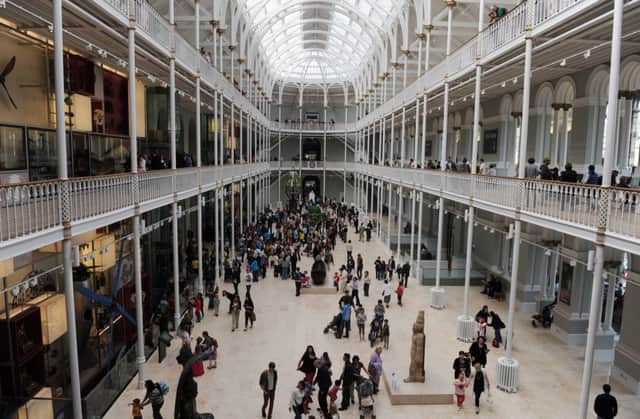New treasures for the National Museum of Scotland


AS MOST readers will be aware, the National Museum of Scotland reopened in July 2011 following a three-year, £50 million transformation of its majestic Victorian building. Since then, more than 5 million people have visited, making it the most popular attraction outside of London for the third year running.
That redevelopment was part of an ongoing masterplan for the museum, and preparatory work is now well underway for the next phase. Over the next couple of years, we will be working on ten new galleries covering the subjects of science & technology and art & design – areas in which we have collections of international significance.
Advertisement
Hide AdAdvertisement
Hide AdWith the inception of our new department of art & design in 2012, our decorative art, fashion and design collections have been given a new identity and impetus.
We have invested in expertise, creating new roles in modern and contemporary design, fashion and textiles, and are also looking to acquire new additions to the collections. Ultimately the quality of any new gallery or display is determined by the objects on show.
Over the last two years, we have been interrogating our holdings with a view to furnishing four brand new art & design galleries, which will include a new gallery devoted entirely to fashion.
It is an immense privilege for us to work on permanent galleries such as these. Indeed, there is no guarantee that such a plum project will occur within the working life of any individual curator. They bring with them a great responsibility too. Get it wrong and you are likely to live with the mistake for a very long time!
In planning our approach to these galleries, we have been able ask ourselves and our peers some useful questions. What is new about what we are doing? What are our audiences’ knowledge and interests? What is specific or unique to the National Museum of Scotland? What sets our collections and our approach apart?
We work with partners and institutions across the country and around the world. Our recently-signed memorandum of understanding with Edinburgh University restates a historic relationship which goes back to the very roots of the foundation of the museum and its collections.
When consulting with colleagues at the Museum of Applied Art in Vienna (MAK) and the New Collection (Neue Sammlung) in Munich, both institutions envied the fact that we are a truly encyclopaedic museum with significant science and technology collections. Few design museums have the luxury of this resource, which sets Scotland’s National Museum apart from many of its peers.
For instance, we are fortunate enough to have one of the early editions of Josiah Wedgwood’s copy of the Portland Vase in our collection. These were widely regarded as being among Wedgwood’s finest achievements, and so the vase will be a highlight of the art and design galleries in its own right.
Advertisement
Hide AdAdvertisement
Hide AdBut the unique value of our wide-ranging collection is illustrated by the fact that our science & technology collection contains an example of the pyrometer Wedgwood invented to refine firing time in the kiln. So, we can not only show off beautiful things – although we will surely do that. The National Museum’s approach to its art & design collections is to understand incredible works such as these through the artistic and technical processes that took them from inception to the final work – to tell the stories of making and creation.
Our interpretation of the museum’s decorative art collections will explore longer design histories stretching as far back as the Middle Ages. For instance, a reliquary casket featuring the Adoration of the Magi, dating to about 1200AD, is one of the undisputed early masterpieces of the era.
The struggles faced by the Limoges craftsmen, or by Josiah Wedgwood, are matched by the work of many makers today, who consciously set themselves technological challenges.
We will show work by Italian goldsmith Giovanni Carvaja, who uses a variety of techniques, including three-dimensional knitting, micro-welding and granulation, to create sculptural jewellery of astounding beauty, blurring the boundaries between contemporary craft and contemporary art. Elsewhere in our new displays, you will see the work of more familiar names like Jean Muir and Charles Rennie Mackintosh, stunning tapestries, gothic treasures, and leading contemporary examples of creativity and innovation in craft, design and production.
We look forward to revealing these and many other treasures and telling their stories in the new galleries, which are due to open in 2016.
• James Robinson is Keeper of Art and Design at National Museums Scotland. Fundraising is underway now for the project, which received first stage Heritage Lottery Fund approval in July 2012.
SEE ALSO